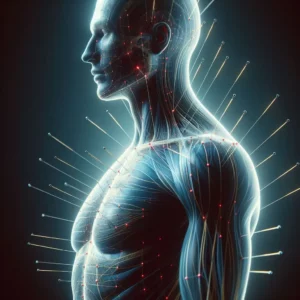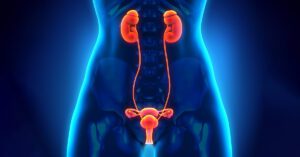Introduction
Urinary incontinence (UI), the involuntary leakage of urine, is a surprisingly common condition affecting millions of women worldwide. While it’s not a life-threatening condition, UI can significantly impact a woman’s quality of life, causing embarrassment, social isolation, and limitations in daily activities.
The good news? You don’t have to live with UI. There are various non-surgical treatment options available to regain control and experience significant improvement in bladder function. This article explores the different types of UI, delves into the benefits and considerations of non-surgical treatments, and empowers you to discuss the best approach with your healthcare provider.
Understanding Urinary Incontinence: Types and Causes
There are two main types of UI affecting women:
- Stress incontinence: Leakage occurs during activities that increase pressure on the bladder, such as coughing, sneezing, laughing, or exercising. This often happens due to weakened pelvic floor muscles, which support the bladder and urethra.
- Urgency incontinence: A sudden and strong urge to urinate, often followed by involuntary leakage. This can be caused by bladder irritation, overactive bladder muscles, or neurological conditions.
Other less common types include mixed incontinence (a combination of stress and urgency UI) and overflow incontinence (difficulty emptying the bladder completely).
Several factors can contribute to UI in women, including:
- Pregnancy and childbirth: Pregnancy weakens the pelvic floor muscles, and vaginal delivery can further damage these muscles, leading to stress incontinence.
- Age: As women age, the muscles and tissues supporting the bladder weaken, increasing the risk of UI.
- Menopause: Decreased estrogen levels after menopause can affect the strength and elasticity of the pelvic floor muscles and urethra, contributing to UI.
- Obesity: Excess weight puts additional pressure on the bladder, increasing the risk of stress incontinence.
- Chronic health conditions: Certain medical conditions like diabetes, neurological disorders, and chronic cough can all contribute to UI.
Why Consider Non-Surgical Treatments for UI?
Non-surgical treatments for UI offer several advantages:
- Non-invasive: These treatments avoid surgery and its associated risks like anesthesia, incision pain, and longer recovery times.
- Safe and effective: Many non-surgical options have a good safety profile and can significantly improve UI symptoms.
- Conservative approach: Before considering more invasive procedures, non-surgical treatments allow you to explore options with minimal risks and discomfort.
- Control and empowerment: Many non-surgical treatments empower you to actively participate in your recovery, fostering a sense of control over your bladder function.
While non-surgical treatments may not completely cure UI for everyone, they can significantly improve symptoms and restore a sense of normalcy.
Exploring Non-Surgical Treatment Options
Here’s a closer look at some common non-surgical approaches for treating UI:
1. Pelvic Floor Muscle Training (PFMT):
This cornerstone of UI treatment strengthens the pelvic floor muscles that support the bladder and urethra. A physiotherapist can teach you specific exercises (Kegels) to tighten and strengthen these muscles, improving your ability to control urine flow. PFMT requires dedication and consistent practice, but it can lead to significant and long-lasting results.
2. Bladder Training:
This technique involves retraining your bladder to hold urine for longer periods. It involves creating a schedule for scheduled urination, gradually increasing the time between bathroom visits. Bladder training may also involve techniques to resist the urge to urinate prematurely.
3. Lifestyle Modifications:
Making simple adjustments to your daily habits can significantly improve UI symptoms:
- Weight management: Losing weight can reduce pressure on the bladder, particularly beneficial for stress incontinence.
- Dietary changes: Limiting caffeine and alcohol can help reduce bladder irritation and urgency.
- Fluid management: While staying hydrated is essential, regulating fluid intake and avoiding excessive drinking before bedtime can minimize leakage.
- Double voiding: This involves trying to empty your bladder completely after urination to reduce the risk of residual urine leakage.
4. Behavioral Techniques:
Certain behavioral modifications can help manage UI:
- Timed toileting: Following a schedule for urination, even if you don’t feel a strong urge, can help prevent accidental leakage.
- Urge suppression: Learning techniques to delay urination when you feel an initial urge can strengthen bladder control.
- Double voiding: As mentioned earlier, attempting to fully empty your bladder after urination can minimize leakage.
5. Medical Devices:
Several medical devices can be used to manage UI:
- Pessaries: These silicone inserts are inserted into the vagina to support the urethra and bladder neck, preventing leakage during stress incontinence.
- Urinary catheters: These tubes may be inserted into the bladder to drain urine on a temporary or long-term basis. This is typically used for overflow incontinence or situations where other treatments are ineffective.
- Urinary liners and pads: These absorbent products can help manage small leaks and provide a sense of security. However, they are not a treatment for UI and should be used in conjunction with other approaches.
Choosing the Right Non-Surgical Treatment:
The best non-surgical treatment for you depends on several factors, including:
- The type and severity of your UI: Stress incontinence often responds well to PFMT and bladder training, while urgency incontinence may benefit from medications or neuromodulation techniques.
- Your overall health and medical history: Certain treatments may not be suitable for women with specific health conditions.
- Your lifestyle and preferences: Some treatment options require more commitment and practice than others. Discussing your preferences with your doctor is crucial.
The Role of Your Doctor:
Consulting a healthcare professional specializing in UI is vital. They can accurately diagnose the type of UI you have, assess the underlying cause, and discuss the most suitable non-surgical treatment options. Be open and honest about your symptoms and any concerns you may have. The doctor may recommend a combination of approaches for optimal results.
Living with Non-Surgical Treatments:
Most non-surgical treatments for UI require some degree of commitment and lifestyle adjustments. Here are some tips to maximize the effectiveness of your chosen approach:
- Be patient: Don’t expect immediate results. Most non-surgical treatments require consistent practice and may take weeks or even months to show significant improvement.
- Maintain a positive attitude: Focus on the progress you make, no matter how small. Celebrate your achievements and stay motivated.
- Communicate openly with your doctor: Regular follow-up appointments are crucial to monitor your progress and adjust the treatment plan as needed.
- Join a support group: Connecting with others experiencing similar challenges can provide valuable emotional support and practical advice.
Conclusion:
Urinary incontinence can be a frustrating and embarrassing condition. However, it’s important to remember that you’re not alone. Numerous effective non-surgical treatment options are available to help you regain control of your bladder function and improve your quality of life. By working closely with your healthcare provider, exploring various non-surgical treatments, and adopting healthy lifestyle habits, you can manage UI and live a confident, fulfilling life.



